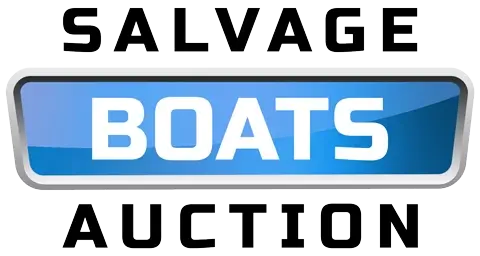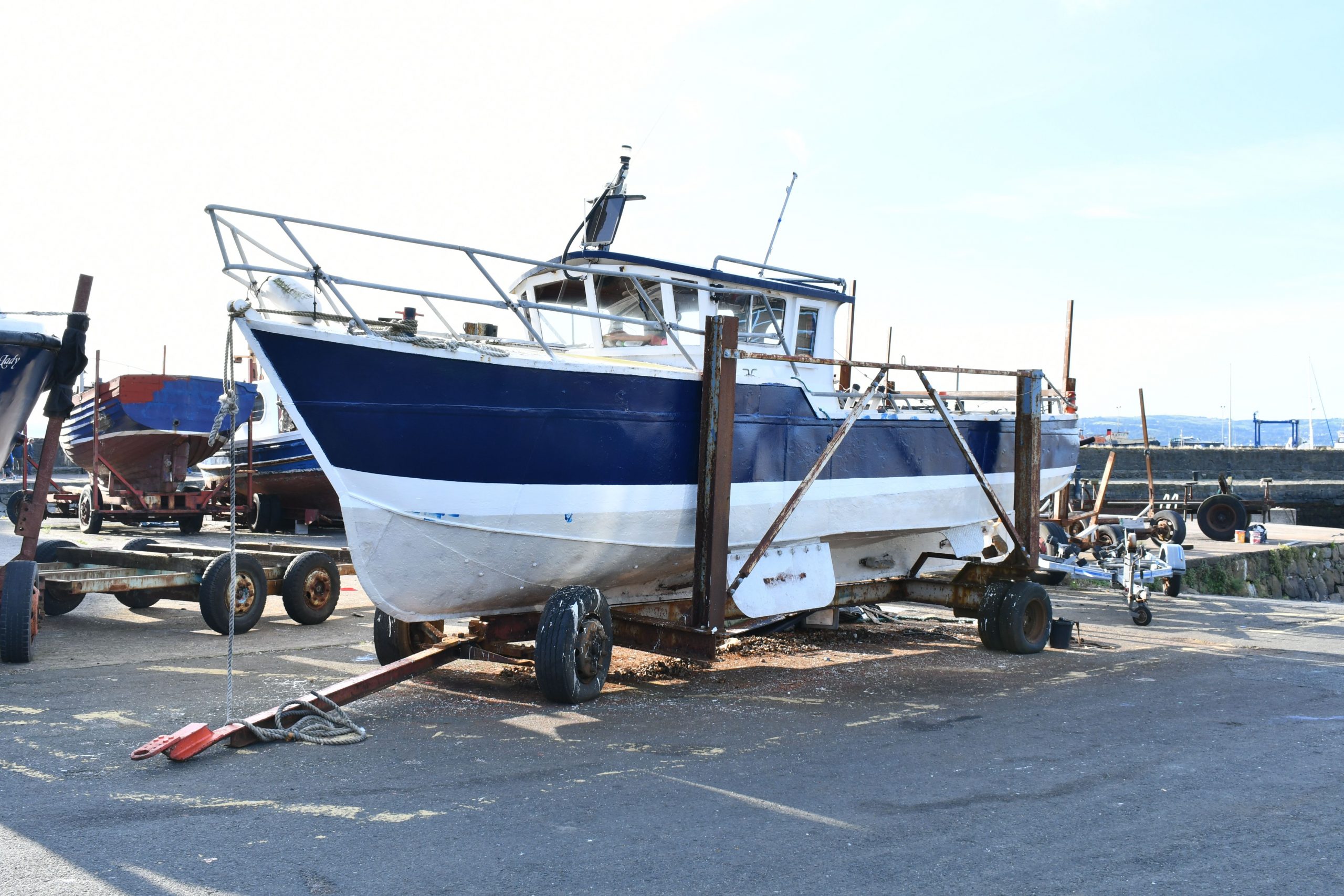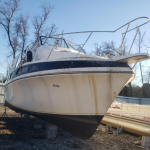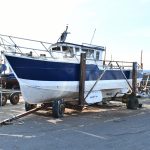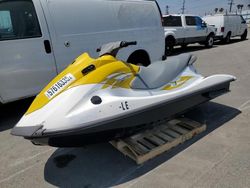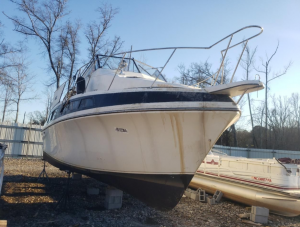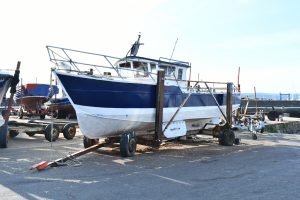
the boating market has witnessed significant changes in recent years, with varying trends in new and used boat sales, consumer preferences, and economic factors all playing pivotal roles. This article delves into the latest market trends, drawing on insights from industry leaders and data analysis to provide a comprehensive overview of the current state of the boating market, particularly focusing on salvage boat auctions and their future outlook.
- New boat sales have surged by 16.8%, indicating a robust growth in the market, primarily driven by an increase in inventory and favorable financial incentives.
- The used boat market has seen a decline, with a 2.2% drop in sales and a 5.6% decrease in total value, as consumers shift their focus towards new boat purchases.
- Budget-friendly boats, especially those under 35 feet, are in high demand, yet the average sold price for these vessels is on a downward trend due to increased supply and stabilized demand.
- Boats Group, as a major industry player, provides valuable insights with its extensive network of boating marketplaces, highlighting the influence of digital platforms on market trends.
- The boating market is showing signs of normalization post-pandemic, with a slight increase in global boat sales in 2023, marking a potential stabilization in the industry.
The Current State of the Boating Market
New Boat Sales Surge: A Closer Look at the Numbers
The boating market has witnessed a significant shift, with new boat sales experiencing a robust 16.8% increase. This surge is not only in unit sales but also reflects a 27% rise in total value, indicating a strong consumer preference for new boats over used ones. The allure of new inventory, coupled with attractive financing options and warranties, has played a pivotal role in this trend.
In the context of global sales, 2023 has seen a slight yet noteworthy rise, marking a departure from the previous downward trend. The 0.86% increase suggests a move towards market stabilization post-pandemic. This normalization is a critical factor to consider when analyzing the surge in new boat sales.
“The sustained demand for budget-friendly boats, especially those under 35 feet, continues to shape the market. Despite this demand, the average sold price for these smaller vessels is on a decline, presenting a unique market paradox.”
The used boat market, however, has not fared as well, with a 2.2% decrease in sales and a 5.6% reduction in total value. This decline could be a direct result of the new boat market’s expansion, which seems to be capturing the interest of potential buyers.
The Decline in Used Boat Sales: Analyzing the Causes
The used boat market has recently experienced a downturn, with a 2.2% decline in sales and a 5.6% drop in total value. This shift is partly due to the allure of new boats, which have seen a significant 16.8% increase in sales, overshadowing the pre-owned market. Buyers are drawn to the benefits of new purchases, such as better financing rates and warranties.
Despite the appeal of new boats, there’s a sustained interest in budget-friendly options, particularly smaller boats under 35 feet. These vessels are the mainstay of global unit sales, yet their average sold price is on a downward trend, suggesting a market correction.
“The boating industry is navigating through complex market dynamics, where the balance between new and used boat sales is delicate. Extended selling times and changing consumer preferences are creating a challenging environment for market participants.”
The extended time on the market for new boats, now averaging an additional 41 days, indicates a more cautious approach by buyers.
This could reflect a heightened level of scrutiny as the market expands with diverse options.
Budget-Friendly Boats: Understanding the Price Dynamics
The boating market has witnessed a sustained demand for budget-friendly options, particularly in the segment of boats less than 35 feet. This trend is a reflection of the market’s response to consumer needs for affordability and practicality.
Despite the high demand, the average sold price for these smaller vessels is on a decline, suggesting a market flooded with supply and a stabilization in consumer demand.
“The affordability of boats is influenced by advancements in manufacturing and engine technology, which have led to more cost-effective production and improved fuel efficiency.”
The price dynamics of budget-friendly boats are also shaped by broader economic factors. For instance, the cost of raw materials such as oil directly impacts the production costs and ultimately the retail price of boats. With oil prices expected to rise, the upward pressure on boat prices seems inevitable. Yet, the market continues to adapt, seeking a balance between quality and cost-efficiency.
Here’s a snapshot of the price trends for budget-friendly boats:
| Boat Type | Average Price (USD) | Price Change (%) |
|---|---|---|
| Personal Watercraft | 10,000 | -2.5 |
| Small Fishing Boats | 15,000 | -1.8 |
| Family Runabouts | 20,000 | -3.0 |
These figures illustrate the subtle yet significant shifts in the boating market, where even a small percentage change can represent a large dollar amount due to the overall cost of boating. As the market continues to evolve, consumers and manufacturers alike must navigate these price dynamics to maintain the delicate balance between affordability and profitability.
Market Dynamics and Consumer Behavior

Shifting Preferences: The Impact on Boat Sales
The boating market is witnessing a significant shift, with new boat sales outpacing used ones, marking a pivotal change in consumer behavior. This trend is highlighted by a robust 16.8% increase in sales of new boats, contributing to a 27% higher total value compared to their used counterparts.
The preference for new over used boats is further evidenced by the longer selling times for both categories. New boats are now spending an additional 41 days on the market, suggesting a more deliberate decision-making process among buyers. This shift is indicative of a market that is increasingly favoring the benefits of new purchases, such as favorable financing rates and warranties.
“The delicate balance between new and used boat sales, coupled with evolving consumer preferences, paints a complex picture for market participants.”
Despite the allure of new boats, the used boat market is experiencing a downturn. Sales have declined by 2.2%, leading to a 5.6% reduction in total value. This suggests that the abundance of new boat options may be diverting buyers’ attention away from pre-owned vessels.
| Boat Type | Sales Change (%) | Total Value Change (%) |
|---|---|---|
| New Boats | +16.8 | +27 |
| Used Boats | -2.2 | -5.6 |
Consumer Demand Trends: Smaller Boats Lead the Way
The boating market is witnessing a sustained demand for smaller boats, particularly in the sub-35-foot category. This trend is reflected in the data from soldboats.com, which shows these vessels leading global unit sales. Despite this demand, the average sold price for these boats is on a decline, suggesting a market dynamic where increased supply and normalized consumer demand are pushing prices down.
In the rental sector, the preference for smaller boats is also evident. Business-to-consumer boat rentals are experiencing robust growth, with projections indicating this trend will continue until at least 2026. Smaller boats, up to 28 feet in length, are highly popular, ranking second in both popularity and revenue.
“As the boating industry navigates these trends, it’s crucial for stakeholders to stay informed and agile. The upcoming Miami Boat Show presents a prime opportunity for industry insiders to gather and strategize in light of these market shifts.”
The table below summarizes the popularity and revenue ranking of different boat sizes in the rental market:
| Boat Size (feet) | Popularity Rank | Revenue Rank |
|---|---|---|
| Up to 28 | 2nd | 2nd |
| 28 to 45 | 1st | 1st |
| Over 45 | 4th | 4th |
The Paradox of Supply and Price in the Boating Industry
In the boating industry, a peculiar trend has emerged: despite a sustained demand for smaller boats, the average sold price for these vessels is on the decline. This is a clear indication of how supply dynamics can influence market prices in unexpected ways. As the supply of budget-friendly boats increases, the prices are experiencing a downward trend, which seems counterintuitive given the high consumer demand.
The boating market is also grappling with affordability issues that span across all levels. Manufacturers are caught in a bind as they strive to meet consumer demands for quality and advanced technology, while also facing increased costs for components and fuel. This raises a critical question: how can prices be stabilized in such a market?
| Boat Segment | Average Price Trend |
|---|---|
| < 35-foot | Decreasing |
| > 35-foot | Stable/Increasing |
“The boating industry’s competitive nature and the challenges it faces, such as environmental concerns and changing recreational habits, are leading to more powerful and efficient boats. However, this comes at a cost, with prices rising steadily, often outpacing inflation.”
As industry players prepare for events like the Miami Boat Show, they must consider these complex market dynamics. The balance between supply and demand, coupled with consumer preferences, is creating a paradox where increased supply does not necessarily lead to increased prices.
Industry Insights from Boats Group

The Role of Leading Platforms in Shaping Market Trends
In the rapidly evolving boating industry, leading platforms have become pivotal in steering market trends. Their leadership positions are attributed to continuous research and development, which has led to improvements in engine efficiency, reductions in emissions, and longer engine lifespans. These platforms not only offer a wide range of marine engines but also provide robust after-sales services, solidifying their market dominance.
The influence of these platforms extends beyond product offerings. They play a crucial role in gathering and analyzing data, which in turn informs the industry’s understanding of consumer behavior and market dynamics. For instance, the insights derived from platforms like Soldboats.com are invaluable for understanding the nuances of both new and used boat sales.
“As the boating industry navigates through these changing currents, it is essential for stakeholders to stay alert to these trends. The balance between new and used boat sales, the lengthening of selling times, and the shift in consumer preferences are all factors that require careful consideration and strategic response.”
The upcoming Miami Boat Show is a prime example of how industry players can come together to discuss and adapt to these market insights, ensuring a sustainable and prosperous future for the boating sector.
Data Analysis: What Soldboats.com Reveals About the Market
The data from Soldboats.com provides a revealing glimpse into the current trends of the boating market. New boat sales have seen a significant uptick, with a 16.8% increase in sales and a 27% rise in total value, indicating a strong consumer preference for new models. This shift is likely influenced by the availability of better financing options and the allure of warranties.
In contrast, the used boat market has not fared as well, with a 2.2% decrease in sales and a 5.6% drop in total value. The preference for new boats, coupled with an increase in their inventory, appears to be drawing potential buyers away from the pre-owned market.
The market for smaller boats, particularly those under 35 feet, remains robust, driving unit sales globally. However, despite the high demand, prices for these vessels are on a downward trend, suggesting a market correction as supply meets and exceeds demand.
The following table summarizes the contrasting trends between new and used boat sales:
| Market Segment | % Change in Sales | % Change in Total Value |
|---|---|---|
| New Boats | +16.8% | +27% |
| Used Boats | -2.2% | -5.6% |
These insights underscore the complex interplay between supply, demand, and consumer behavior, shaping the boating industry’s future.
Economic Factors Influencing the Boating Sector

The Miami Boat Show: A Convergence of Market Strategies
The Miami Boat Show stands as a pivotal event for the boating industry, where key players gather to exchange insights and align their market strategies. The event serves as a barometer for the industry’s health and a forecast of the year’s trends.
- Stakeholders from across the globe converge to share knowledge.
- Discussions focus on balancing new and used boat sales.
- Strategies are adapted in response to evolving consumer preferences.
“The Miami Boat Show is more than an exhibition; it’s a strategic hub where the future of boating begins to take shape.”
As the industry navigates through the complexities of market dynamics, the show offers a unique opportunity for collaboration and innovation. The convergence of ideas at this juncture is crucial for ensuring a resilient and thriving global boating community.
Affordability and the Average Cost of Boat Ownership
The boating industry has seen a significant shift in affordability, with the average boat sale price being a substantial $146,904. This figure, however, may not fully represent the market as high-end yacht sales can heavily influence the average cost. Despite this, the sustained demand for budget-friendly boats, particularly those under 35 feet, suggests a market leaning towards more accessible options.
Fuel efficiency improvements and advanced manufacturing techniques have contributed to making boat ownership more attainable. Yet, the cost of boats has risen sharply, with some models seeing a 75% price increase since 2000, largely due to rising oil prices and enhanced boat features.
“The paradox of increased demand for smaller boats leading to a decrease in their average sold price illustrates a unique market trend, where supply and normalized consumer demand are impacting prices.”
Understanding the true cost of boat ownership extends beyond the purchase price. Prospective buyers must consider ongoing expenses such as maintenance, storage, and fuel, which can add significantly to the total cost of ownership.
Global Sales Indicators: Signs of Market Normalization
In a surprising turn of events, the report reveals a slight rise in global boat sales in 2023, marking a departure from the downward trajectory observed in recent years. The modest increase of 0.86% in boat sales suggests that the market may have reached a state of full normalization following the initial surge triggered by the pandemic.
One notable trend is the shift in dynamics between new and used boat sales. New boats emerge as the primary driver, experiencing a robust 16.8% increase in sales, contributing to a remarkable 27% higher total value. This surge in new boat sales could be attributed to increased inventory in the market, enticing buyers with favorable financing rates and warranties, thereby tilting the scales in favor of new purchases.
“The stabilization of the global boating market is a positive sign for industry stakeholders, indicating a return to predictable patterns and sustainable growth.”
Future Outlook for Salvage Boat Auctions

The Rise of New Boat Inventory: Implications for Salvage Auctions
The boating industry is witnessing a significant shift with the rise in new boat inventory. This trend is reshaping the landscape of salvage boat auctions, as the influx of new boats influences both the availability and desirability of salvaged options. With new boat sales experiencing a robust 16.8% increase, the market is tilting towards these fresh additions, offering more choices to consumers with the allure of favorable financing rates and warranties.
However, this shift is not without its consequences for the used boat sector. The decline in used boat sales by 2.2% suggests that consumers are now more inclined to invest in new models, leaving the pre-owned market to navigate a challenging environment. This dynamic is particularly impactful for salvage auctions, where the appeal of used and salvaged boats may diminish as buyers opt for the security and novelty of new vessels.
“The balance between new and used boat sales is delicate, and the implications for salvage auctions are profound. As new boats flood the market, the role of auctions in the boating ecosystem could see a transformation, potentially leading to a reevaluation of strategies by auction participants.”
The upcoming Miami Boat Show could serve as a pivotal gathering for industry insiders to assess these trends and their influence on salvage auctions. It is essential for stakeholders to stay agile and responsive to the evolving market to maintain a competitive edge.
Adapting to Market Trends: Strategies for Auction Participants
As the boating industry navigates through evolving market conditions, auction participants must be agile and informed to capitalize on opportunities. Understanding the nuances of market trends is crucial for making strategic decisions that align with the current industry landscape. Auctions offer a unique platform for buyers to access a diverse range of boats at potentially lower costs, making them an attractive option for many.
To stay ahead, participants should consider the following strategies:
- Cost Appeal: Auctions can provide significant savings compared to traditional market prices.
- Variety of Options: A wide selection of boats is often available, catering to different preferences and needs.
The Miami Boat Show serves as a pivotal event for industry insiders to gather insights and refine their approaches. It’s essential to identify new market opportunities and position oneself for growth amidst these dynamic shifts. By doing so, auction participants can ensure a resilient and successful presence in the boating market.
Predicting the Future: Salvage Boat Auctions in a Post-Pandemic World
As the boating industry emerges from the pandemic’s wake, the salvage boat auction market is poised for transformation. The slight rise in global boat sales in 2023 indicates a move towards market stabilization, and this trend is expected to influence salvage auctions significantly. With new boat sales outpacing used ones, the dynamics within auctions are likely to shift.
- New boat sales increased by 16.8%, driving a 27% rise in total value.
- Used boat sales saw a 2.2% decline, with a 5.6% drop in total value.
The balance between new and used boat sales will be critical in shaping the future of salvage boat auctions. Stakeholders must adapt to the changing landscape to capitalize on emerging opportunities.
The upcoming Miami Boat Show is a pivotal event where industry players can strategize in response to these market shifts. The delicate interplay of supply and demand, coupled with consumer preferences, will dictate the pace of recovery and growth for salvage boat auctions in a post-pandemic world.
Chart the course of salvage boat auctions and market trends. Explore the demand for salvaged vessels, the factors influencing prices, and how enthusiasts and investors navigate this unique segment of the maritime market.
The boating industry’s landscape is undergoing significant changes, as evidenced by the latest data from Boats Group. The surge in new boat sales, marked by a robust 16.8% increase, is reshaping market dynamics, overshadowing the used boat segment which has seen a decline. This shift is further complicated by the paradox of decreasing prices for smaller, budget-friendly boats despite their high demand. As industry stakeholders gather at the Miami Boat Show, they are presented with an opportunity to strategize and adapt to these evolving trends. The slight uptick in global boat sales indicates a market stabilizing post-pandemic, yet the balance between new and used boat sales, affordability concerns, and consumer preferences will continue to challenge the industry. It is clear that navigating these waters will require a keen understanding of the market’s undercurrents and a willingness to adjust sails accordingly.
Frequently Asked Questions
What is causing the surge in new boat sales?
The surge in new boat sales, with a robust 16.8% increase, is attributed to an increase in inventory, enticing buyers with favorable financing rates and warranties, which makes new purchases more appealing.
Why are used boat sales declining?
Used boat sales are declining, with a 2.2% drop in sales and a 5.6% reduction in total value, because the abundance of new boat options may be diverting buyers’ attention away from pre-owned vessels.
How is consumer demand affecting the price of smaller boats?
Despite the sustained demand for smaller, budget-friendly boats, the average sold price is decreasing due to an influx of supply and normalized consumer demand, which is exerting downward pressure on prices.
What insights does Boats Group offer about the boating industry?
As a global network of boating marketplaces, Boats Group provides valuable insights into industry trends, showing shifts in consumer preferences and the balance between new and used boat sales.
What is the average cost of boat ownership?
The average boat sale is approximately $146,904, but this figure can be skewed by expensive vessels such as yachts. It’s based on the total boating industry revenue divided by the projected number of boats sold.
What does the future hold for salvage boat auctions?
The rise of new boat inventory may impact salvage boat auctions, with market participants needing to adapt strategies in response to market trends and the post-pandemic world.
Join us as we embark on a maritime odyssey, unraveling the extraordinary stories, challenges, and triumphs that define the world of salvage boats. “Salvage Boats Auctions ” is your portal to a world where the waves whisper tales of resilience, redemption, and the relentless spirit of the sea. Bon voyage!
